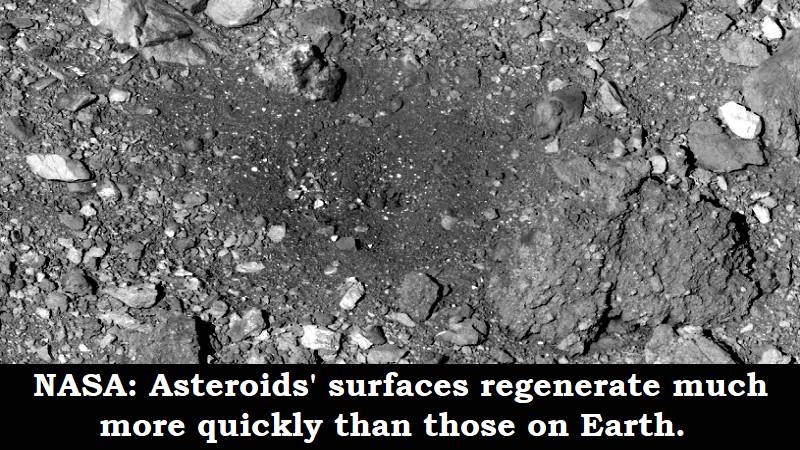
According to a research posted on the National Aeronautics and Space Administration (NASA) website, NASA scientists discovered that surface regeneration occurs much more quickly on asteroids than it does on Earth.
After examining rock fractures on the asteroid Bennu from high-resolution photographs captured by the OSIRIS-REx probe, NASA specialists from the OSIRIS-REx mission have discovered information about surface regeneration.
They found that rocks on Bennu are fractured by the Sun’s heat in just 10,000–100,000 years, which will help astronomers determine how long it takes boulders on asteroids like Bennu to disintegrate into smaller particles. The particles may either eject into space or stay on the asteroid’s surface, the NASA article mentioned.
Marco Delbo, senior scientist at Université Côte d’Azur, CNRS, Observatoire de la Côte d’Azur, Laboratoire Lagrange, Nice, France, said that tens of thousands of years might sound pretty slow, but ‘we thought surface regeneration on asteroids took a few millions of years’.
Delbo continued, ‘We were startled to see that the ageing and weathering process on asteroids happens so swiftly, geologically speaking.’ Delbo is the primary author of a research that was published in June 2022 in Nature Geoscience.
According to NASA, surface changes on Earth occur gradually, but they can also occur rapidly due to landslides, volcanoes, and earthquakes. According to NASA, over millions of years, rock strata are gradually broken down by changes in water, wind, and temperature, resulting in new surfaces.
However, NASA noted that the Bennu’s rapid temperature variations produce internal stress that fractures and degrades rocks.
On Bennu, the Sun rises every 4.3 hours. At the equator, daytime highs can almost reach 260 F, while nighttime lows can almost approach -10 F.
In spacecraft photographs from the initial scans, the scientists were able to see the fissures in the rocks of Bennu. According to Delbo, the fractures appeared to all point in the same direction and were ‘a clear signal that temperature shocks between the day and the night may be the reason.’
Delbo and his coworkers manually assessed the length and angles of more than 1,500 fractures found in OSIRIS-REx pictures. NASA said that some were shorter than a tennis racket, others longer than a tennis court.
Given that the cracks were mostly aligned in a northwest-southeast orientation, it is likely that the Sun was to blame. According to Delbo, fractures might point randomly if landslides or impacts were shifting boulders more quickly than they were breaking.

Post Your Comments